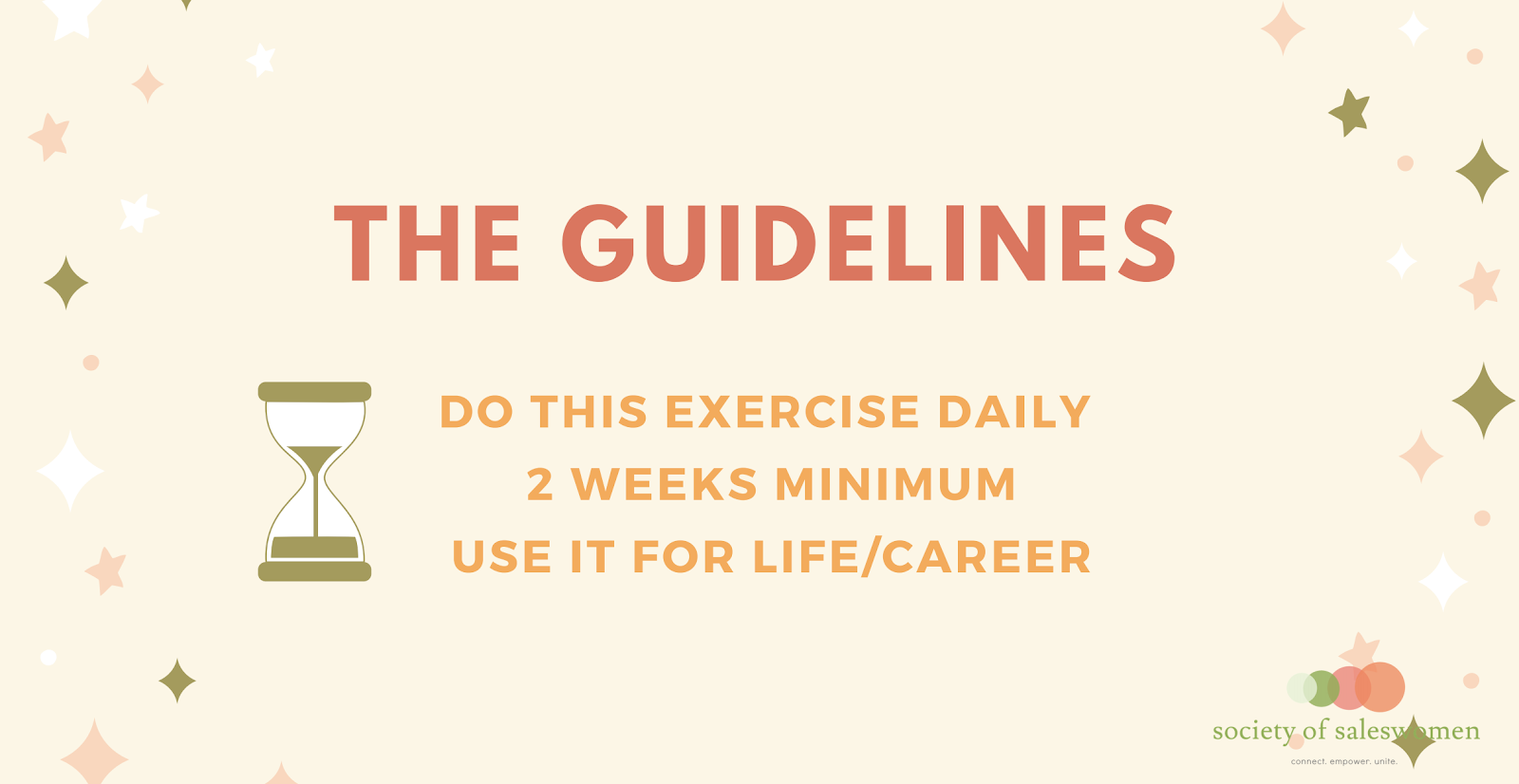
Why Journaling Is My Secret Sauce to Success
I often talk about this idea of ‘getting caught up in the shiny objects.’ It’s one of the biggest reasons startups mishire and where so many salespeople take left turns when they should be going straight ahead.
In the SaaS world of fast-paced business, startups, sales, and growth, it’s easy to lose perspective on what really matters.
The more clear and real I am with myself, the better my mind works and the better I can lead or create a sales strategy that works.
I have a methodology and a workflow that I use daily. A key part of that is journaling. It’s had an immense effect on my mindset, sales process, decision-making ability, and clear-headedness.
While it may sound cliche, it’s part of my secret sauce and has yet to let me down.
The benefits of journaling are diverse and well-documented:
-
-
Intentionality
-
Memory
-
Understanding why
-
The ability to work through challenges faster
-
Increased self-confidence
-
Valuable lessons learned
And the list goes on…
Who wouldn’t want all of that?!
Journaling is my way of understanding my own metrics that matter to me versus flying blind or getting caught up in what doesn’t really apply to me. The best part? It’s free!
It’s made a huge difference for me when it comes to decision-making, understanding what’s really going on and the root cause, personal relationships, professional relationships, sales process, sales strategy, my LinkedIn strategy, starting a business, making career moves, and so much more.
“It is very difficult to complain about a situation morning after morning, month after month, without being moved to constructive action.” – ‘The Artist’s Way’
Taking time to reflect on your life gives you an opportunity to better understand yourself and improve your situation because you’re showing up for yourself. Whether it be your enterprise sales process, sales strategy, methodology, new customer challenge, startup life, onboarding a new team, and so much more.
This is one of those daily practices that’ll pay you back tenfold.
My Daily Journaling Roadmap
It can take anywhere from 18 – 254 days to form a new habit.
That said, I like to take new things in bite-size pieces. Start with committing to at least two weeks. This will give you enough time to get a feel for the process, the time of day that best serves you to reflect, and the benefits of getting what’s in your head down on paper.
As I reflect on my career, life in startups, sales process, success stories, personal challenges, and opportunities, I would’ve botched so many things up had I not leaned into my journal. I have a journaling methodology, and I’m excited to share some of my secret sauce with you.
My journaling roadmap starts at the beginning of the day, with more time to reflect as I wrap the day up. I start with a blank page, draw a cross, and create four quadrants.
Before I wax poetic on the page, I start with the four quadrants. You’ll notice, only the top-left quadrant is filled out when you sit down in the morning.
Asking yourself ‘what do I want to do today?’ helps you reflect, outline your goals for the day, and get your head in the right place. After all, mindset leads to action, and those actions lead to outcomes.
For me, this question often informs and inspires my LinkedIn posting, other parts of my content marketing strategy, sales strategy, workflow, and other important bits and pieces for the day. It’s a productive way to kick the day off on the right foot.
As I wrap my day up, I tackle the remaining three areas of the quadrant, followed by free-form writing to get any other thought out of my head down on paper. It’s amazing to see if what I intended to do translated into action (or not).
For example, I’ve been journaling about:
-
How I want to show up to authentically share my lessons learned and help my community get better versus being another social media voice (and why that’s a priority)
-
Sales and Customer Success leadership for early-stage, SaaS startups
-
Customer Success for my company
-
Launching the ATP Studio.
-
New customer wins and lessons learned from while they working with me
-
Why the idea of doing a podcast is interesting
-
There are only 24 hours in a day, and how do I do a better job of balancing my time
-
What kind of “user experience” do I want to create for anything I’m involved in
It’s important not to look back to the previous days and to be 100% honest. Remember, this is by you, for you, to take care of you.
You’re not always going to hit all of your daily goals or have the answers from one journal session – and that’s okay.
The point is to get in the habit of reflecting on what happened, your part in it, what went right, what went wrong, and why.
Over time, the real value unfolds as you accrue several pages to make the “look back” count. This brings me to the next step…
Once you have journaled for at least two weeks, it’s time to get your highlighter and start combing through to search for common themes.
Here are some questions I ask myself as I look in the rearview:
-
Why is this a consistent topic?
-
What are the things that I’m consistently doing well?
- Do I love those things?
- Why are they going well?
-
What is my part in the challenging themes and why are they happening?
-
Who is the real decision maker?
- Why?
-
How is the market that I’m a part of changing (startups, enterprise sales, SaaS, Customer Success, social media…)?
- Why
- What part of it matters the most to me?
-
Who are the “stakeholders” for the situations I’m a part of?
- What is my relationship with them?
- Are we creating success stories together or fighting every step of the way?
- Why?
-
What are the things I’m consistently leaving behind/not getting done?
-
Is it time to ask for help?
-
Once you have these valuable insights and understand yourself on a deeper level, this is when you use your own “data” to pinpoint areas you can take action on. Taking intentional action makes a world of difference versus just showing up to do something that you don’t understand or care very little about.
Take what you’ve learned about yourself, create a scorecard to help you make the right career decisions if you’re trying to figure out if you should stay or go, and use all of that data to talk it out with your own “advisory board.”
It’s like being the CEO of your own startup. The best advisory boards aren’t diluted with yes people and have a handful of key people who help, challenge the status quo, and inspire meaningful progress.
For you, this should be a group of no more than five trusted people to avoid sending yourself into a tailspin. These people will be honest with you, point out your blind spots, challenge you, and have your best interests at heart. Choose them wisely to make sure they’re buoys versus anchors.
I think of these conversations as a great mirror to help you get to know yourself on a deeper level, highlight what you can improve, and open up new opportunities personally and professionally.
Before we wrap up, here are a few tips:
Don’t look at your previous pages until it’s time to look back!
It’s tempting, but you don’t want to get hung up on what you were thinking yesterday or the day before. Start every day fresh and let yourself write freely, without holding any preconceived notions about what you should write about.
Even if it’s just a few sentences about a LinkedIn posting that got you in the feels, how you want to help salespeople get better, or figuring out what kind of sales training you need to be your best self, that’s okay.
Feel free to do this more than once per day!
It doesn’t have to take hours and can be a quick practice. I keep journals (yes, I have more than one) near so when I’m feeling reflective, I can easily do this twice per day. If you decide to head that route, I’d recommend wrapping up the first quadrant in the middle of the day and the second quadrant before bed at night.
That way, you give yourself enough time on both ends to actually get something done!
Create an Excel sheet!
As you highlight and pinpoint your common themes, having an Excel sheet to account for what they are and how often they come up is key. It’s also a great way to make creating a scorecard a heck of a lot easier while ensuring you don’t miss any of the important factors.
Wrapping Up
The stories we tell ourselves aren’t always rooted in reality. This is a great way to make sure we’re operating from a place of reality versus getting bogged down in perception.
So that’s it. You’ve got part of my secret sauce via these four simple steps. Before you know it, you’ll be on the way to experiencing the benefits of journaling to be a better salesperson, leader, startup founder, entrepreneur, friend, or family member…
BIG love to the Society of Saleswomen for taking my words shared and creating a powerful LinkedIn posting to bring it all to life visually for the social media win.
All of the images used in this post are complements of them, thank you!






